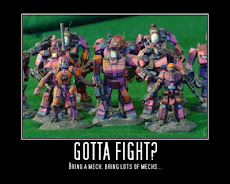 |
| Click to embiggen: a perfectly cromulent word. |
I always wondered what was the difference between a wood and a forest, or a jungle. So now I'm making a forest I thought it might be good to go and find out for myself.
I now know far more than I ever thought I needed to know about woods and forests.
1. Temperate Coniferous Forest
Found where warm summers and cool winters and enough rainfall to sustain the trees. Species found including cedar, cypress, Douglas fir, fir, juniper, pine, podocarpus, spruce, redwood and yew. The understory also contains a wide variety of herbaceous and shrub species.
2. Sub-Alpine Coniferous Forest
Conifer forests are typically found on steep, rocky, north-facing slopes.
3. Freshwater Swamp Forest
Either permanently or seasonally flooded by freshwater, they can be found in a range of climate zones: boreal; temperate; sub-tropical; and tropical. Normally found along the lower reaches of rivers, and around freshwater
lakes.
4. Lowland Equatorial Evergreen Rainforest
These forests occur in a belt around the equator, which receive with more than 2000mm or 80 inches rainfall annually.
5. Secondary Forest (Second growth)
This is where there has been re-growth after a large event: fire; insect infestation; timber harvest; or wind throw, after a long enough period has passed and the effects are no longer evident. One sign of this is that the trees are spaced closer together and they have less undergrowth.
6. Mangrove Forest
These consist of salt tolerant trees and shrubs that grow in coastal saline or brackish water that thrive in low oxygen (anoxic) waterlogged mud.
7. Boreal or Taiga Forest
Mostly coniferous forests consisting mostly of pines, spruces and larches, and aside from the oceans these make up the world's largest biome.
8. Peat Swamp Forest
These are forest wetlands in tropical and subtropical areas with poor drainage and waterlogged soil, which prevents dead leaves and wood from fully decomposing.
And below an illustration of the typical profiles of temperate versus tropical forests.
 |
| Also, click to embiggen. |
I, of course, want a generic enough forest that I can use it for tropical and temperate set wargames. So my plan is to swap out specific trees using the bases in my previous post. I'm currently waiting on some E6000 Plus glue so that I can start applying seafoam to the trunks I've prepared.
It's a cunning plan, and we shall have to see if it works.







.png)





Ashley that is above and beyond for a wargamer!
ReplyDeleteDoing research on your trees. I just like them green and fluffy. 😂
Thank you for saying so, but the pedant in me says that wargamers are always obsessed with uniforms and equipment, so why not the terrain that we play on. I know, I know, it's just me. ;-)
Delete